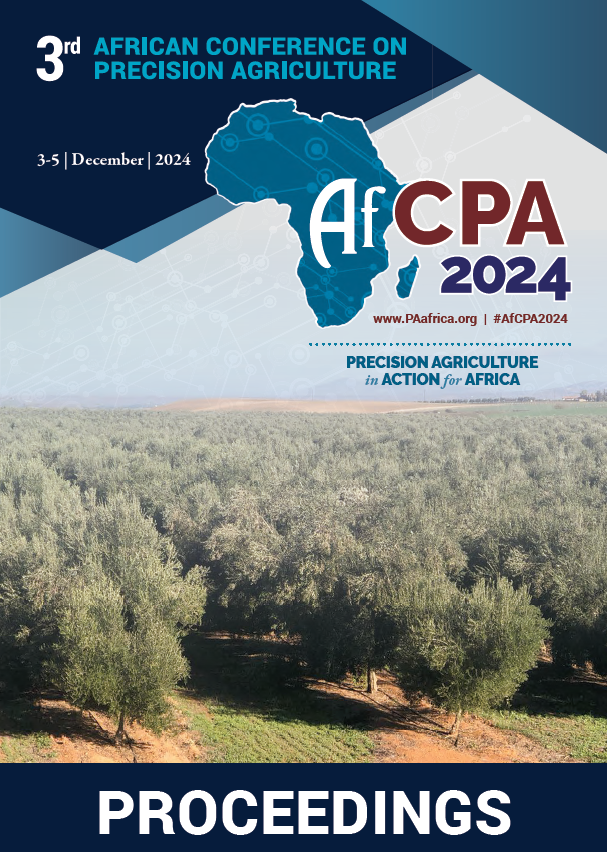Download the Conference Proceedings
Proceedings
Authors
| Filter results5 paper(s) found. |
|---|
1. Spatial Interpolation for Mapping Hydraulic Soil Properties in GIS EnvironmentSoil water information is an essential input for environmental, hydrological or land surface models. There is a need for reliable soil water information with current coverage in the area. A number of 60 soil profiles data were evaluated for the performance of estimates inverse distance weighting to map some of the soil quality properties. soil profiles were used for the application of geostatistics. Maps with the investigated coverage were produced with the soil information available about soil... M.A. Abdelrahman, A.M. Saleh, M.M. El sharkawy, E. Farg, S.M. Arafat |
2. Development of Canopy Mapping System of Asian pears (Pyrus pyrifolia Naka) Using Terrestrial Laser ScanningIn this paper, the canopy mapping system (CMS) of Asian pears for estimating yield during Bud thinning and Pruning operations using point cloud data was proposed. Bud thinning and Pruning in Asian pear (Pyrus pyrifolia Naka) is necessary to ensure quality and yield but is time-consuming and heavily depends on work knowledge. This study described a method of estimating the number of fruits through the length of a branch based on remote sensing. The CMS would be useful to support more efficient... E. Morimoto, J. Lee, K. Nonami, I. Matumura, M. Ikebe, S. Sato |
3. Determining Nutrients rates for Maize, Rice, Cotton, and Tomato in Dry Savannah zone of Togo based on site specific nutrient management approachInadequate fertilizer application limits crop yields and lead to the soil fertility depletion. This study aims at formulating nutrients rates recommendations for main the crops in dry savannah zone of Togo. Site specific nutrient management approach based on spatial variations in nutrients status, crops nutrients requirement and average crop yields under field conditions was used to determine recommendations rates in N, P and K. For maize cropping, nutrients needs are 94 kgN.ha-1, 42... |
4. Potato Yield Prediction Using Multi-temporal Sentinel-2 Data and Multiple Linear RegressionTraditional potato growth models have a number of flaws, i.e., the cost of data collection, quality of input data, and the absence of spatial information in some cases. To address these challenges, we created a multiple linear regression model (MLRM) that uses the multi-temporal Sentinel-2 derived indices to predict potato yield. Along the growing season (from October 2019 to February 2020) eight Sentinel-2 imageries were collected, afterwards, the normalized difference vegetation index (NDVI)... M.E. Amin, M.A. Abdelfattah, E.S. Mohamed, A.A. Belal, M. Nabil, A.G. Mahmoud |
5. Evaluating the Impact of Seasonal Weather Variability on Soil Moisture Conservation Under Mulching Systems for Date Palm Production in OasesSoil moisture is an essential parameter that governs crop production and soil health. Therefore, the critical role of soil moisture cannot be overstated in sustaining agriculture, especially in arid and semi-arid regions. Date palm production not only plays a vital role in economic and nutritional purposes in many arid areas but also plays important roles in creating favorable microclimates for agriculture and protecting lands from desertification. This study proposes an innovative approach... U. Safi, O. Abdallah , A. Sabri |
